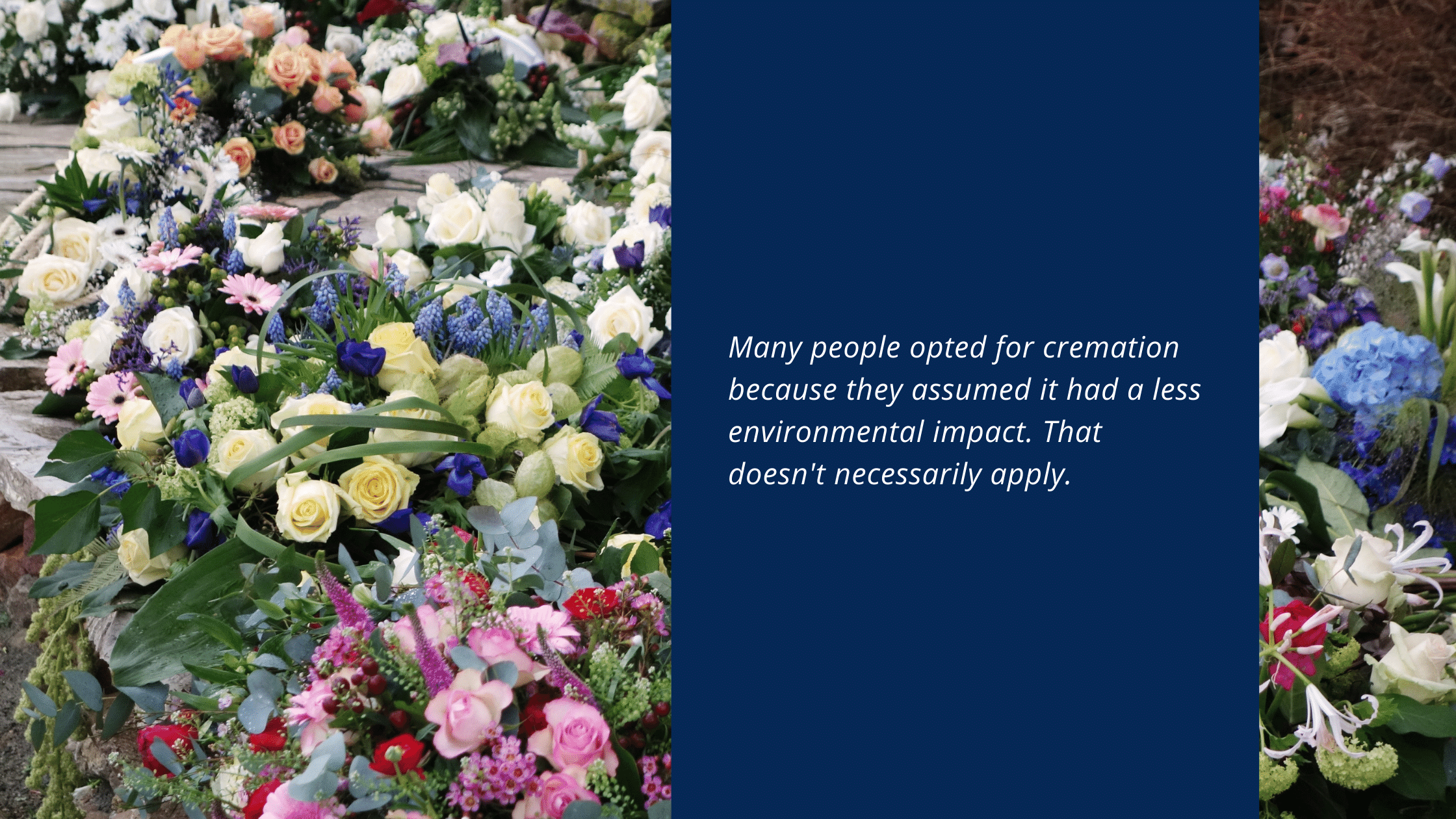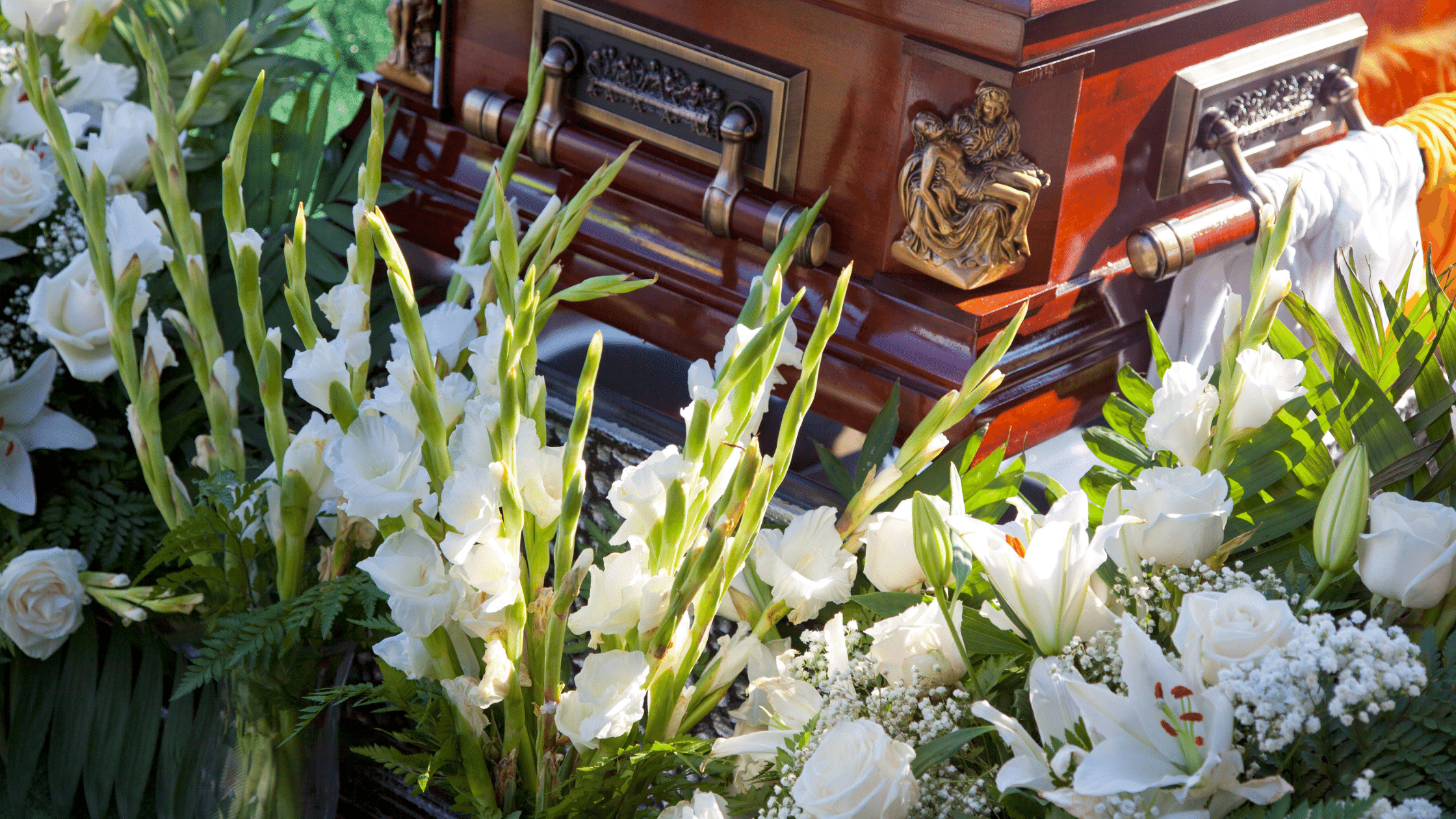
Cremations and funerals contribute to the enormous environmental impact that funerals have.
At some point in our lives, many of us would have recycled countless reams of paper, cardboard boxes, glass bottles, and beer cans. We may have made a conscious effort to turn off the lights as we leave the room to minimize our impact on the environment. As we become conscious of the carbon footprint we leave behind in life, modern funeral homes and crematoriums strive to reduce the environmental impact of death.
Your carbon footprint stretches into the afterlife. In 2020, 37.5 percent of American corpses were laid to rest. Fifty-six percent were cremated.
Many people opted for cremation because they assumed it had a less environmental impact. That doesn’t necessarily apply. When determining whether to bury or cremate, you should be aware of the distinctions between the two. They both contribute to carbon dioxide, but they have different impacts on other parts of the environment.

Traditional burial methods involve digging a six-foot piece of soil. The body of the person is in a wooden coffin, which the undertakers descend and cover with soil. A vault surrounds the coffin, then a headstone is placed on top of marking the grave.
It’s very resource-intensive. Each year, Americans bury 73,000 kilometers of hardwood and 1.5 million tons of concrete in cemeteries. The average cemetery has enough wood to build forty different houses.
If you choose to go underground, you can reduce your environmental impact by refusing embalming fluids. This will allow your body to break down naturally in the ground. You can then choose an alternative way to contain your body. You may wrap your body in a shroud. It will decay with time. Alternatively, you can select a shallower tomb. Burying a body in three feet keeps it from being taken by animals while allowing bacteria to break it down.
The last thing you can do is ask for any flower at the top of the grave. A lot of florists use pesticides and too much water to grow those flowers. If others want to put bouquets, you can ask them to gather theirs in the neighboring fields.
Traditional cremation consists of putting a body in a cardboard box or a flammable box. The box is then slid into a crematorium, which functions at elevated temperatures. The body is reduced to fragments of bones and ashes, which are placed in an urn.
The crematorium utilizes neither wood nor concrete. There is no need for embalming fluids. It has an environmental footprint, though. Many crematories are dependent on natural gas, which releases carbon dioxide into the atmosphere. It may also release mercury from dental fillings. Vaporized mercury can rise in the air and cause acid rain. Ask your mortician to remove your fillings ahead of time.
Pick a coffin made from non-toxic materials like recycled cardboard. If you want to bury the ash, put it in a box made of biodegradable substances. The more common are wicker. Lastly, when spraying the ashes, make sure to spread them. Too much ash can make it impossible for plants to receive oxygen and sunlight. Avoid sprinkling ash onto fish streams.
There are pros and cons whether you chose the traditional burial or cremation. In other countries, there are several options for you to have an eco-friendly burial, but not quite in the Philippines – not just yet. However, you may discuss your concerns with your funeral director to find a solution that may have less impact on the environment.